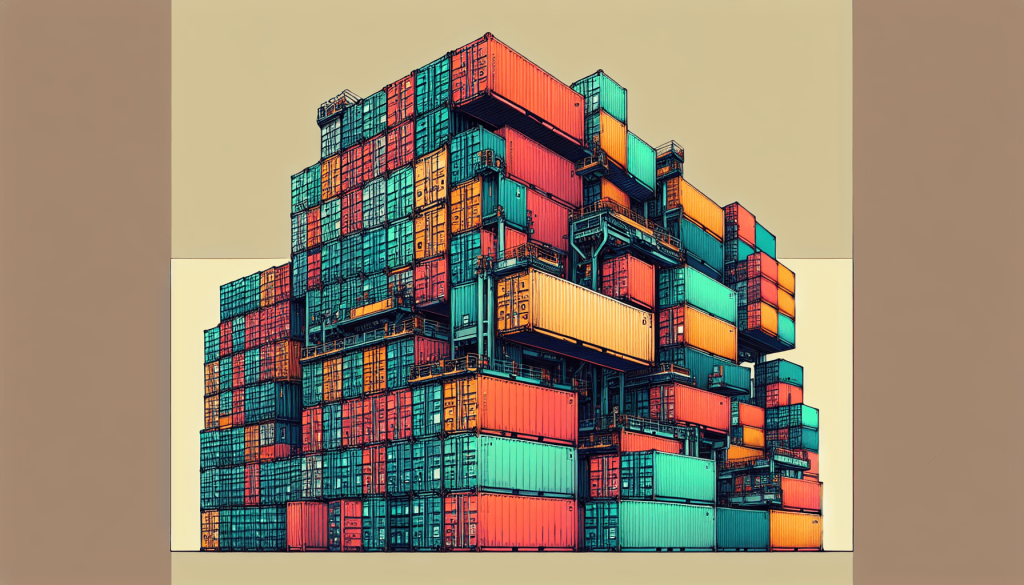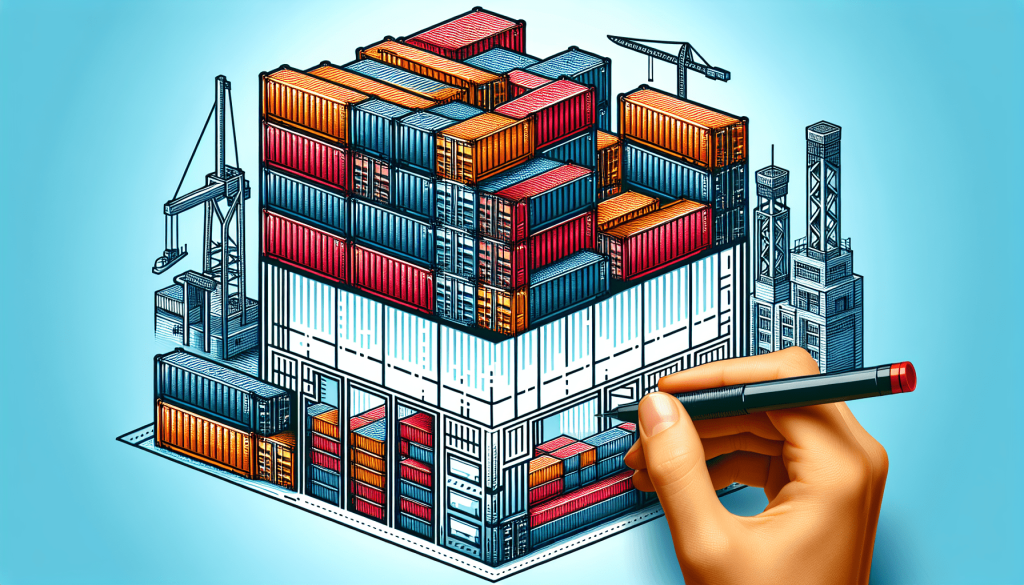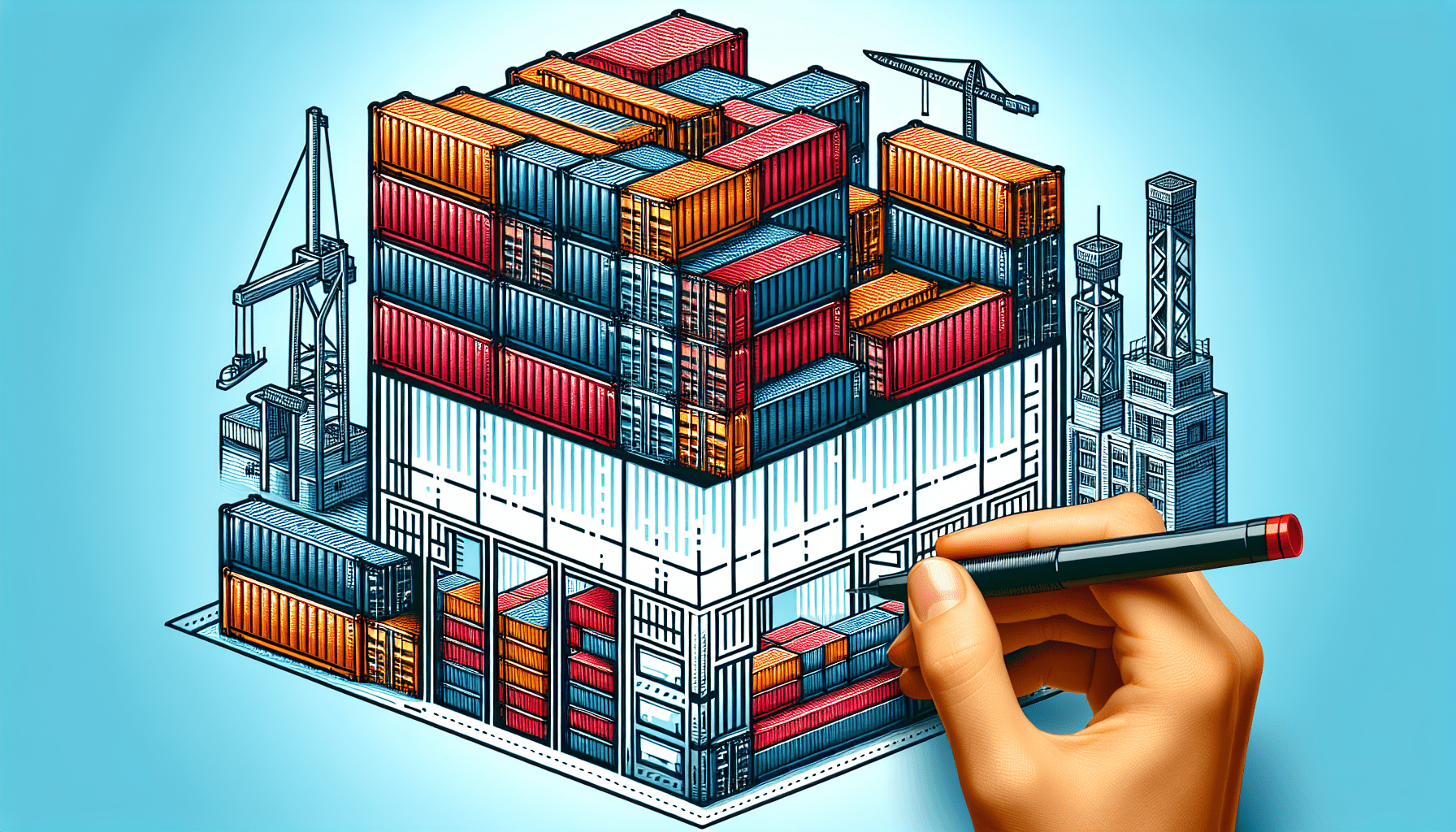Have you ever wondered what the official term is for those big, durable metal boxes used for shipping goods around the world? Well, look no further! In this article, we will uncover the technical name for a shipping container and explore its fascinating history and the essential role it plays in international trade. So buckle up and prepare to discover the intriguing world of these sturdy cargo carriers.
Definition
Intermodal Container
An intermodal container, also known as a shipping container, is a standardized metal box designed for transporting goods by various modes of transportation, including ships, trucks, and trains. These containers are built to withstand the rigors of long-distance transportation and provide a secure and efficient means of moving cargo across different geographical locations.
ISO Container
The technical name for a shipping container is ISO container, which stands for International Organization for Standardization container. The ISO container is a type of intermodal container that adheres to the international standards set by the ISO, ensuring compatibility and uniformity in container design, dimensions, and handling procedures worldwide.
History
Origin and Development
The concept of shipping containers can be traced back to the early 20th century when the need for standardized packing and handling systems became apparent. However, it was not until the 1950s and 1960s that the modern shipping container as we know it today began to emerge. Malcolm McLean, a transportation entrepreneur, is often credited as the “father of containerization” for revolutionizing the way goods are transported.
Standardization of Shipping Containers
In order to facilitate efficient global trade and seamless movement of cargo, the standardization of shipping containers became crucial. The International Organization for Standardization (ISO) developed guidelines for container dimensions, strength, and other specifications in order to ensure compatibility between different modes of transportation and facilitate easy transshipment. Today, ISO containers have become the industry standard, making international logistics more efficient and cost-effective.

Types of Shipping Containers
Dry Storage Container
The most common type of shipping container is the dry storage container, also known as a general-purpose container. These containers are enclosed and weatherproof, providing protection for a wide range of goods during transportation. The standard dimensions for a dry storage container are 20 feet and 40 feet in length, but variations in size, such as 10 feet and 45 feet, are also available.
Refrigerated Container
Refrigerated containers, commonly known as reefers, are designed to transport temperature-sensitive goods, such as fresh produce, pharmaceuticals, and frozen foods. These containers are equipped with a built-in refrigeration unit, allowing for precise temperature control throughout the journey. Refrigerated containers play a crucial role in maintaining the quality and freshness of perishable items during long-haul transportation.
Tank Container
Tank containers, also referred to as tanktainers, are specialized containers designed for the transportation of bulk liquid or gas cargo. These containers feature cylindrical or rectangular tanks, constructed with materials suitable for the specific cargo being transported. Tank containers have standardized fittings and valves to ensure safe handling and transportation of hazardous or non-hazardous liquid and gas substances.
Open Top Container
Open top containers are used for transporting oversized or bulky cargo that cannot be loaded through the standard doors of a dry storage container. The top of the container can either be removable or covered with a tarpaulin, providing easy access for loading and unloading using crane or other equipment. These containers are ideal for goods such as machinery, construction materials, or vehicles.
Flat Rack Container
Flat rack containers are characterized by their collapsible sides, allowing for easy loading and unloading of goods that cannot fit into a standard container. These containers are commonly used for heavy machinery, vehicles, or oversized cargo, as they provide a versatile and secure way to transport such items. Flat rack containers can be stacked when empty to save space during storage or transport.
Construction
Materials Used
Shipping containers are typically made of corrugated steel sheets, which provide strength and durability while also allowing for structural flexing during transportation. The steel used in container construction is specifically treated to resist corrosion and withstand extreme weather conditions encountered at sea.
Dimensions and Specifications
The dimensions of a shipping container vary depending on the type and purpose. The most commonly used sizes are the 20-foot and 40-foot long containers, with a standard height and width. These dimensions allow for efficient stacking and handling during transport, as well as easy intermodal transfer between ships, trucks, and trains. ISO containers have standard specifications for corner fittings, twist locks, and floor strength to ensure compatibility and safe handling.
Fittings and Features
Shipping containers are equipped with a variety of fittings and features to facilitate efficient loading, handling, and security. These include corner castings for interlocking and securing containers during stacking, locking mechanisms to prevent unauthorized access, and forklift pockets and lashing points for easy handling and securing during transportation. Some containers also have ventilation systems, internal lashing points, and specialized flooring for specific cargo requirements.

Advantages of Shipping Containers
Efficient Transport and Handling
Shipping containers have revolutionized the transportation industry by providing a standardized, efficient, and cost-effective means of moving goods across long distances. With intermodal compatibility, containers can seamlessly transition from ships to trucks or trains without the need for time-consuming and labor-intensive repackaging or transshipment.
Versatility and Adaptability
The design of shipping containers makes them highly versatile and adaptable to different cargo types and transportation needs. They can accommodate a wide range of goods, from dry bulk commodities to temperature-sensitive items, and their standardized dimensions and fittings make them compatible with various modes of transportation, enabling seamless integration into the global supply chain.
Secure and Weatherproof
Shipping containers are designed to withstand the harsh conditions at sea, making them highly secure and weatherproof. With their robust construction and locking mechanisms, they provide protection against theft, tampering, and unauthorized access. Additionally, their resistance to water, wind, and other environmental factors ensures the integrity and safety of the cargo during transit.
Challenges and Considerations
Limited Interior Space
While shipping containers provide efficient means of transportation, their interior space can be limited, especially for bulky or irregularly shaped cargo. Careful consideration and planning of cargo packing are necessary to optimize space utilization and minimize the risk of damage during transport.
Loading and Unloading Challenges
Loading and unloading containers, especially when dealing with heavy or oversized cargo, can present challenges. Specialized equipment and experienced personnel are often required to ensure safe and efficient handling. Additionally, the need for proper distribution of weight within the container and securing the cargo for stability during transport further adds to the complexity of the process.
Maintenance and Repair
Like any other piece of equipment, shipping containers require proper maintenance and occasional repairs to ensure their longevity and functionality. Regular inspections, cleaning, and maintenance of container components, such as doors, floors, and seals, are necessary. In case of damages or wear, repairs may be required to maintain the container’s structural integrity and weatherproofing.
Innovations and Future Trends
Smart Containers
The advent of smart containers equipped with advanced tracking and sensing technologies is revolutionizing the logistics industry. These containers are embedded with sensors that monitor environmental conditions, such as temperature, humidity, and vibration, providing real-time data to ensure the safety and quality of the cargo. Smart containers also enable better tracking and visibility throughout the supply chain, optimizing operations and reducing the risk of loss.
Sustainable Design and Materials
With the increasing focus on sustainability and reducing the carbon footprint of transportation, shipping containers are being designed and manufactured using eco-friendly materials and practices. This includes the use of recycled steel and other environmentally friendly materials, as well as the integration of renewable energy sources, such as solar panels, to power container operations. Additionally, efforts are being made to develop container designs that maximize space utilization and minimize waste during transport.
Automation and Robotics
The future of shipping containers is closely tied to automation and robotics. Advancements in technology are enabling the development of autonomous container handling systems, including automated cranes and trucks, to further streamline operations and reduce dependency on manual labor. Robotics and artificial intelligence are also being explored for tasks such as cargo loading and unloading, container stacking, and maintenance.
Shipping Container Architecture
Conversion and Repurposing
Shipping containers have gained popularity in the field of architecture as a sustainable and cost-effective building material. Their modular nature, standardized dimensions, and structural stability make them ideal for various applications, including homes, offices, retail spaces, and even emergency shelters. Container conversion involves retrofitting and customization to meet specific design and functional requirements.
Advantages in Construction
Shipping container architecture offers several advantages over traditional construction. It allows for faster construction times, as the basic structural elements are pre-fabricated and ready to be assembled. Containers also offer flexibility in terms of design and layout, as they can be stacked, combined, or modified to create unique and innovative structures. Moreover, container constructions are often more cost-effective and environmentally friendly compared to conventional building methods.
Impact on Global Trade
Revolutionizing Supply Chain
The introduction of shipping containers has revolutionized the global supply chain, making international trade faster, more efficient, and less expensive. By standardizing container design and handling procedures, the time and costs associated with manual cargo handling and re-packaging have been significantly reduced. The seamless transition between different modes of transportation has facilitated intermodal transport, enabling goods to reach their destinations more quickly and reliably.
Economic Implications
The widespread use of shipping containers has had profound economic implications. It has facilitated the growth of global trade, allowing businesses to reach wider markets and consumers to access a greater variety of goods. The efficiency and cost-effectiveness of containerized shipping have made international trade more accessible to small and medium-sized enterprises, driving economic growth and job creation worldwide. Additionally, the competition resulting from containerization has led to lower transportation costs, benefiting both producers and consumers.
Conclusion
Shipping containers, also known as intermodal containers or ISO containers, have transformed the world of logistics and global trade. Their standardized design, versatility, and ease of handling have made them an essential component of the modern supply chain. With their ability to transport goods efficiently, securely, and cost-effectively, shipping containers have revolutionized global trade and paved the way for a more interconnected and prosperous world economy. As container technology continues to evolve, with innovations in smart containers, sustainable materials, and automation, their impact on global trade and architecture is expected to grow even further in the years to come.

I am James, the creator behind SeaBoxInnovations.com. Welcome to our premier online destination dedicated to the world of sea containers. Think Inside the Box is our tagline, and our website is your go-to source for exploring the endless potential of these versatile and adaptable containers. Whether you’re interested in purchasing, customizing, or learning about the latest trends in container architecture and design, we have you covered. Join us as we bridge the gap between traditional uses and cutting-edge applications, promoting sustainability and innovation in design and construction. Get ready to embark on your next big project with SeaBoxInnovations.com.

